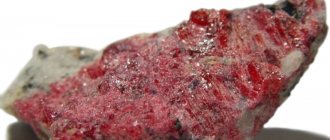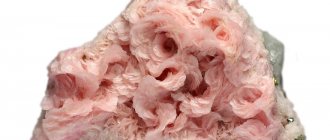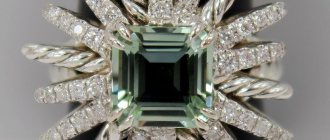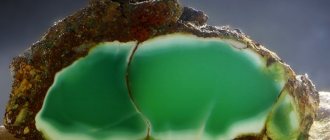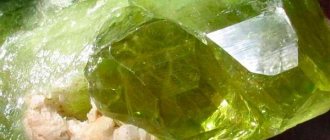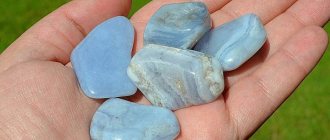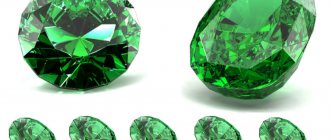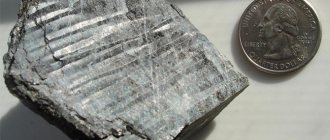Sugilite, also known as lavulite and sagilite, got its name from the Japanese mineralogist K. Sagi, the discoverer of a new mineral who made his discovery in the mid-20th century while conducting research in the southern regions of the Japanese islands. Several decades later, deposits of a new gem were also discovered in India. But the most widely known was the sugilite deposit in the south of the African continent, namely in the Kalahari Desert, which for a long period served as the main source of stone extraction.
Today, sugilite is considered a rare and special mineral. It is still mined only in three known and developed mines (Japan, India, Kalahari), which is why it remains a valuable representative of a number of “young” gems.
Sugilite deposits
— Advertising —
Sugilite is a very rare mineral that is mined only in three countries. The birthplace of the gem is the island of Shikoku, which is part of the Japanese archipelago. In addition, crystals of high jewelry quality have been discovered in southern Africa, in the Kalahari Desert, but the local deposits will soon exhaust themselves. Another of the large deposits was found in India.
Today, searches for Sugilites are being conducted in Australia, Italy, and Tajikistan.
What does sugilitis look like (video)
It occurs in the form of prismatic crystals up to 2 cm long, fused into dense aggregates, usually together with zircon, albite, apatite, aegirine, pectolite and other minerals. It is most often formed in stratiform manganese deposits, both in South Africa or in aegirine-syenite stocks, and in Japan. Currently mined in India, Madhya Pradesh, Australia, Woods mine, Tamworth and New South Wales, Japan, Iwagi Islet, South Africa, Wessels and N'Chwaning mines, and mine workings Kuruman and Cape Province.
We also recommend reading:
The history and curse of the Kohinoor stone The marvelous ametrine stone Characteristics of larimar and its main properties Selection of stones by date of birth
Deposits are known in Tajikistan and Italy, but they have no industrial significance.
History of Sugilite
Sugilite is one of the youngest precious minerals, the first discovery of which occurred a little more than half a century ago.
Gems of low quality were found in the middle of the last century on the Japanese archipelago by the Japanese mineralogist K. Sagi, after whom the stone later received its name. A couple of decades later, a rich deposit of high-quality sugilite was found in southern Africa near Namibia. It was then that the gem was officially recognized as an independent mineral, and also acquired another name “wesselite”, after the name of the Wessels mine where it was mined. Additionally, Sugilite is also known as Lavulite, Purple Turquoise and Royal Azel. The term “lavulite” refers to jewelry samples painted in lilac (lavender) color, “royal azel” has a special purple hue that resembles a royal robe, and sugilite is similar to turquoise with its veins and matte shine.
Physico-chemical characteristics of sugilite
— Advertising —
By chemical nature, sugilite is a lithium silicate of sodium and potassium; it also contains iron, manganese and aluminum as accompanying impurities. The mineral has imperfect cleavage, glassy luster, and is transparent or translucent. The crystals are characterized by a hexagonal system; their color varies widely from yellowish to bright purple.
Hardness on the Mohs scale 5.5-6.5, density 2.74-2.79 g/cm³. Refractive index: 1.607-1.610. Sugilite has weak pleochroism and is a fragile stone. In its properties, the mineral resembles beryl and tourmaline.
How to distinguish a fake?
On the stone market you can often find imitation sugilite made of plastic or glass. It can be distinguished from a natural mineral by standard characteristics:
- the rate of heating of the stone in the palm – natural sugilite will remain pleasantly cool for a long time;
- weight of the gem – a real stone is much heavier than plastic and glass;
- coloring and pleochroism effect - it is almost impossible to artificially convey all the shades, patterns and iridescence of natural stone.
Sugilite can easily be confused with other natural minerals of similar color - lilac amethyst, charoite and sogdianite. They can be distinguished from each other only by their chemical composition in a laboratory manner, since visually they are very similar.
Magical properties of sugilite
The purple stone sugilite is a mystical mineral, with the help of which magicians and sorcerers often summon spirits and learn various secrets.
It is believed that its magical powers are aimed at awakening the abilities of telepathy and clairvoyance in a person. In everyday life, sugilite is a strong amulet that reliably protects its owner from a dangerous situation, malicious intent, envy and ill will, as well as from energy vampirism. Sugilite is able to effectively absorb the negative energy that comes from all the people around it, but for the same reason it is important to clean it regularly. For this purpose, the stone is left in clean cold water, and then placed in a dark place for several hours.
Amulets with Sugilites are a symbol of professional and creative success. They add determination and ability to work to a person, reveal hidden talents and develop intuition. Such properties of the gem are very useful for artists, writers and musicians.
Storage and care
Varieties of nugget differ in different physical and chemical properties, so proper care plays an important role in the longevity of such products. Despite its high hardness, the mineral remains brittle. It is important to avoid strong mechanical influences - friction, shock.
Avoid prolonged exposure to different temperatures. Keep away from sun, water, chemicals. To clean, simply wipe with a damp cloth and then dry. Careful storage is possible only in a separate box with soft walls.
Medicinal properties of sugilite
Sugilite became known to humanity relatively recently, but lithotherapy has already both studied it and begun to use it.
Color therapy uses purple sugilites, as they have a positive effect on a person’s mental and emotional processes. The energy of the stone helps to find peace of mind, restore sleep, and get rid of unreasonable fear and anxiety. Those who are constantly in a stressful situation and susceptible to prolonged depression turn to sugilite for help. Sugilite is also an effective remedy in the treatment of diseases of the heart and blood vessels; it is used for migraines. But it should be borne in mind that the stone can also cause increased fatigue and nervous tension. For this reason, it is not recommended to wear more than one piece of jewelry with this mineral.
Healing properties appear upon visual and tactile contact with the gem. The crystal is often slightly heated and placed on the so-called "third eye", on the solar plexus or in the center of the palm. The length of such a procedure is selected individually. For eye contact, special balls are used that are placed at home or in offices.
Healing properties of howlite
The main element of howlite is calcium borosilicate. In modern lithotherapy, there are recommendations for pregnant women: howlite beads will help replenish the calcium balance in the body, as well as strengthen the immune system and increase natural protection against stress.
The mineral is used during procedures aimed at improving the functioning of the cardiovascular system and strengthening the walls of blood vessels, as well as for restoring injured joints.
Advertising - Continued below
Howlite retains heat well, which is why it is used during massage to warm up the client before direct medical procedures.
Branches of application of sugilite
Sugilite, as a rare gemstone, has received high praise in the jewelry community due to its unusual purple tones and beautiful pleochroism. Translucent high-quality crystals are inserted into various jewelry (earrings, rings, pendants, necklaces) after being cut into drop-shaped cabochons. The stone looks equally chic in both silver and gold frames.
Varieties
Sugilites come in varieties that differ in location or color.
Wesselites are stones mined in South Africa, while lavulites are lavender-colored stones, most often of African origin.
There are rare specimens that exhibit dichroism in the form of an “Alexandrite” color effect. These stones change color depending on the lighting. In daylight they are bluish-violet, and in artificial light they take on a red-purple color.
Sugilite colors
The most common sugilite has exquisite lilac and violet shades due to the presence of manganese and iron impurities in its composition. In general, its color palette starts with pink and continues to deep purples, purples and reddish purples known as magenta.
How to Care for Sugilite
Jewelry with sugilite is protected from mechanical stress, cracks and scratches due to the fragility of the stone. It is quite resistant to other external influences, so the products are cleaned with a warm soapy solution and a soft cloth, washed with running water and dried in air.
Where is the gem used?
The only area of application of the stone is beauty:
- Transparent and translucent specimens are taken by jewelers.
- Low-transparent samples become interior sculpture, decor for candlesticks, boxes, and other household items that are pleasing to the eye.
- Large opaque specimens go to collectors. The richness of color makes it possible to create impressive collections of stone.
The ease of processing sugilite allows jewelers and stone cutters not to limit their imagination. But minimal processing makes jewelry with purple or lilac stones luxurious.
Ring with sugilite
The traditional frame of the inserts is jewelry alloy, gold, silver.
Sugilite and zodiac sign
Since astrologers have not identified any contraindications for the use of sugilite in any zodiac sign, its properties can be used by everyone. This mineral has the most favorable attitude towards Virgo, Sagittarius and Aquarius. But in any case, the gem itself chooses the owner with whom it establishes energetic contact. Sugilite should attract the eye and give warmth, and then it can be safely used as a talisman.
Origin of the mineral
Howlite is a stone that is named after its discoverer, Henry Howe.
Henry Howe was a geologist and specialist in rare rocks. In 1868, he discovered an interesting gem in Canada on the Nova Scotia Peninsula.
There is another transcription option - howlite.
Howlite is also called turquenite. Being discovered in the era of rationalism, the stone does not appear in the myths and legends of European peoples. It was studied only by the scientific method.
Howlite was first discovered in Canada.
But the Indians, the indigenous inhabitants of North America, knew about howlite for a long time. They called it "white bison" or "sacred bison." Archaeologists find pendants, amulets, and magical objects made of howlite at excavations of settlements and sites of ancient tribes.
With the help of the gem, the Indians performed rituals to protect against evil spirits, as well as rituals that were supposed to bring good luck. Europeans, when they began to use jewelry with a Canadian wonder, also learned about the magical properties of the stone.
However, Indian shamans warned: the “white bison” does not like it when he is not accepted for who he is. It was strictly forbidden to paint or draw anything on the mineral.
Prices for sugilite products
The price of sugilite jewelry is determined by the quality and size of the stone and the metal of the setting.
Thus, the cost of a silver ring with a stone up to 10 mm in diameter is $200, while a gold pendant with a similar gem will already be valued at $1,500. Beads with a mass of about 100 g and a circumference of 50 cm cost about $1,400. Costume jewelry is made from opaque sugilite crystals at a more affordable price. These can be beads and bracelets, small cabochons, which are estimated at 10-30 dollars.
Price
The world price of semi-precious stone of jewelry grade is $10–50 per carat.
Russian stores offer the following assortment (price/thousand rubles):
- cabochons (South Africa, 28x17x8 mm) – 0.5-5.5;
- stone (polished, 126x32x80 mm) – 52;
- earrings (jewelry alloy, bead diameter 12.5 mm) – 4.9;
- bracelet (beads diameter 13–15 mm) – 23–24;
- pyramid (50-50 mm) – 1.5.
Sugilite bracelet
The cost of the product is affected by the color of the stone (the thicker and richer the violet, the more expensive) and dimensions.
Interesting Facts About Sugilite
- The trade names for sugilite are royal lavulite and royal azel. The most popular on the jewelry market are purple specimens that contain richterite inclusions. Due to its rarity, even small crystals are very expensive. Sugilites are confused with dark amethysts and charoites.
- The largest cut sugilite weighed 23.5 carats. It is now in the Smithsonian Institution (USA).
